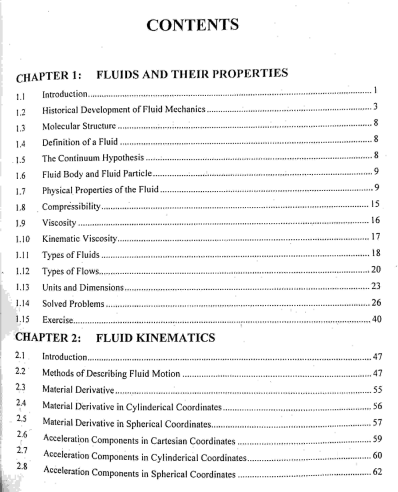Introduction to Fluid Mechanics
Fluid Mechanics is a branch of applied mathematics and physics that studies the behavior of fluids liquids, gases, and plasmas and the forces acting upon them. It combines mathematical theory, physical principles, and engineering applications to explain how fluids move, interact, and affect their surroundings.
At its core, fluid mechanics seeks to answer questions like:
-
How does water flow through pipes?
-
What causes air turbulence around an airplane wing?
-
How do ocean currents and weather patterns form?
-
Why do objects float, sink, or drift in fluids?
Why Fluid Mechanics Matters
Fluid mechanics plays a critical role in science, engineering, and daily life:
-
Aerospace & Aviation: Understanding lift, drag, and turbulence for aircraft and spacecraft.
-
Environmental Science: Studying rivers, ocean circulation, and climate dynamics.
-
Civil & Mechanical Engineering: Designing pumps, turbines, dams, and water supply systems.
-
Biology & Medicine: Explaining blood flow in the human body and fluid transport in cells.
-
Energy & Industry: Applications in oil, gas, renewable energy, and chemical processes.
Key Concepts in Fluid Mechanics
-
Pressure and Buoyancy: Why fluids exert force and how objects float or sink.
-
Viscosity: The “thickness” or resistance of a fluid to flow.
-
Laminar and Turbulent Flow: Smooth vs. chaotic fluid motion.
-
Continuity and Conservation Laws: Principles of mass, momentum, and energy in fluids.
-
Navier Stokes Equations: Fundamental mathematical models that describe fluid flow.
Learning Fluid Mechanics
At Math Grammar, we aim to make this challenging subject approachable through:
-
Step-by-step notes and examples
-
Simplified explanations of core principles
-
Real-world applications that connect math with engineering and science
Fluid mechanics shows how mathematics describes motion and change in the natural world, from a gentle stream to the vast movements of oceans and atmospheres.

Fluid
Nawazish

Fluid Mechanics
R K Rajput
